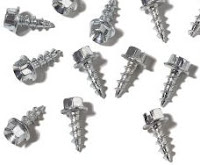 In what has become a near-annual tradition, Seth and I headed north to the White Mountains for a Columbus Day camping trip. This is always a fun trip that lets the cousins spend some time together. Seth's girls always a bewildered by Calvin's behavior, which is typical of a teenage boy. Calvin tries his best to make sure they are bewildered.
In what has become a near-annual tradition, Seth and I headed north to the White Mountains for a Columbus Day camping trip. This is always a fun trip that lets the cousins spend some time together. Seth's girls always a bewildered by Calvin's behavior, which is typical of a teenage boy. Calvin tries his best to make sure they are bewildered.Since it was October, the weather is a roll of the dice. In the past, we've endured wind, rain and cold. This year, it was cold the first night but otherwise the weather was perfect. As we gathered around the campfire to cook our "highly nutritious" hot dogs, the temperature dropped into the low 30's. We piled on the layers of clothing and finished the meal with s'mores.
 After a cold night's sleep, we went out for a large breakfast to prepare for our hike. The hike is usually a source of tension since I haven't always chosen well. Two years ago, we decided to hike Mt. Webster and Mt. Jackson. The guide book called for a four hour hike, but we ended up needing nearly seven. The last hour of the hike was in the dark, without lights, and I still hear about it.
After a cold night's sleep, we went out for a large breakfast to prepare for our hike. The hike is usually a source of tension since I haven't always chosen well. Two years ago, we decided to hike Mt. Webster and Mt. Jackson. The guide book called for a four hour hike, but we ended up needing nearly seven. The last hour of the hike was in the dark, without lights, and I still hear about it.Determined not to repeat my mistake, I decided that Mt. Jefferson would be a good choice. The hike up Jefferson is a relatively short, five mile round trip. To make it interesting, much of the hike is above tree line and very rugged.
 The start of the hike is deceptively easy, climbing gently for awhile. Before long, the trail starts to head up steeply, with only a brief break before heading above tree line. Once above tree line, the real fun starts. On the way to the summit, there are three large mounds of rock in the way. The trail leads you up and over each of them. This requires a fair amount of scrambling over rocks, using your hands almost as much as your feet in some sections.
The start of the hike is deceptively easy, climbing gently for awhile. Before long, the trail starts to head up steeply, with only a brief break before heading above tree line. Once above tree line, the real fun starts. On the way to the summit, there are three large mounds of rock in the way. The trail leads you up and over each of them. This requires a fair amount of scrambling over rocks, using your hands almost as much as your feet in some sections.Throughout the day, gliders were soaring overhead, riding the wind that we couldn't feel from the trail. In all my years of hiking, it was the first time I'd ever seen gliders.
At the summit, we were no longer sheltered from the wind, so we didn't linger. On the way down, the steep sections were more daunting and required some care. Although they were sometimes intimidated, everyone made it down without incident.
There wasn't too much complaining this year, so I think I did a better job of choosing the hike. It also helped that we made it back to the car before dark.
































